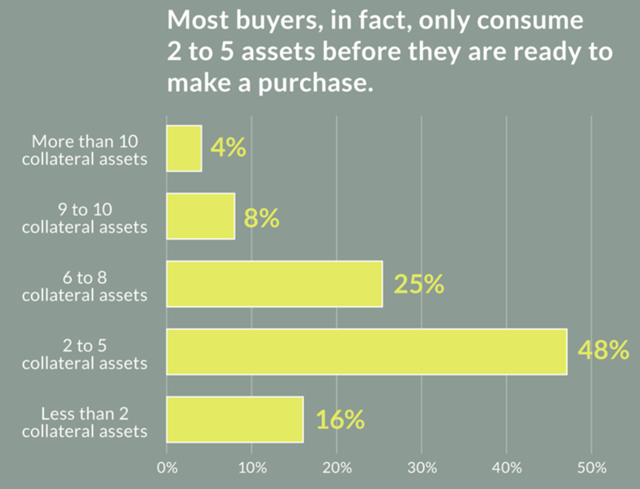Topic:
B2B Marketing
Selling to companies and other organizations is still a lot like selling to people. In essence, it is not B2C or B2B it is H2H - Human to Human! In recent years, digital technology such as websites, search engines, and mobile computing has drastically changed the way marketers and sales teams reach buyers.
Consumers and B2B buyers all have access to information that is virtually unlimited now. Buyers can research anything they might wish to buy, rent, or borrow. The following eight points highlight some of the unexpected implications of the changed relationship between sellers and buyers.
The merger of desktop and mobile computing means that your buyers look to their mobile devices first and it’s how they’re most likely to find you initially. The image of corporate buyers sitting in cubicles staring at PC screens is as out of date as CRT monitors in the flat screen age.
This access to unlimited information gives buyers much more power over their purchasing decisions. Mobile first means that your content must be equally accessible to buyers on all browser platforms.

We live in a content-consuming world and content is the engine that drives digital sales. It’s content like blogs, videos, and infographics that help your buyers to take you seriously. When buyers respect and trust you, they’ll return to you for additional information and then to purchase your offerings.
According to Hubspot, forty-seven percent of buyers will consume three to five pieces of content before reaching their purchase decisions. So, you’ll convert more of your visitors into buyers if you serve them a consistent flow of compelling content.

In practical terms, the real buyers in B2B are the people behind the brands. It’s still humans who make all purchase decisions and not organizations, which are abstract entities. While brands are the collections of features that define a corporate structure, the individual people still make all the choices. B2B buyers make decisions emotionally like all people, and they value experiences at least as much as retail consumers.

You might think that multi-channel marketing is a different beast from Inbound. However, they’re complimentary enough to consider in your inbound strategy.
Buyers don’t want to be aware of any discontinuities between your channels. Any disruption to the experience is likely to lead to buyers going elsewhere. For best results ensure that your channels are integrated, and your touch points are congruent. If you are implementing Inbound Marketing, then be sure to share the content where the prospects seek it, for example, LinkedIn groups specific to your topic.

Marketers must provide a smooth transition between communication channels
Another boundary that is likely to discourage your buyers is any disconnect between your marketers and sales team. Under the Inbound methodology, your marketers must work as one team with your sellers to convert visitors into qualified leads and then into sales. Buyers are sensitive to any disconnect between the two roles.
If your marketing and sales systems are integrated, then the sales team will have all of the history and the context about a prospect before they do any outreach. The element that is crucial is to be sure your organization looks like one welled oiled machine and the perception of your company with the prospect improves with each an every touch by email, website, content and communication.
The psychology of modern B2B buyers has reversed in recent years, compared to traditional sales and marketing outreach. Your buyers may not even be conscious of the way that they’ve changed their habits in response to digital technology.
We’ve all changed our buying habits if you think about it. These days, if you need information about anything, you tend to reach for your smartphone reflexively. To reach customers, you have to be present where they’re looking which is now most likely to be the screen of a digital device.
Bonus offer: Download the research that demonstrates this trend!
It’s the subordinates in any organization that feel the pain that drives sales most strongly. Target the managers who make purchasing decisions, they’re always under pressure to solve problems, and they love it when you help them look good to their bosses.
Your buyer personas should reflect the characteristics of the real people whose job is to purchase the products and services you offer. While the executives who take final responsibility are at the top, it’s often the managers and directors lower down who seek out products and services and make the buying decision. Help subordinate managers impress their superiors, and they’ll be yours for life.
Finally, B2B buyers include Millennials. The younger set is of-age, building careers, and making purchasing decisions. Millennials are the most entrepreneurial generation in history, and they have the financial muscle to go with it.

If you know how to approach them and connect, your B2B buyers will do much of the work for you. Developing the personas that accurately reflect the traits of your buyers is a continuous process. Monitor changes in your buyer personas and watch for new ones that emerge and they’ll reward your Inbound Marketing Strategy by turning your B2B buyers into the most valuable assets of your brand.
Bristol Strategy is a full funnel inbound marketing agency and inbound sales agency offering the full complement of Inbound Marketing services that enable our clients to surpass their business objectives by transforming the way they engage with their buyer on-line. Reach out to us to learn more about how our experience and capabilities can help your business grow.
Ask us about our unique approach that creates a full-funnel "inbound" engagement model for your business that attracts and converts digitally engaged prospects.